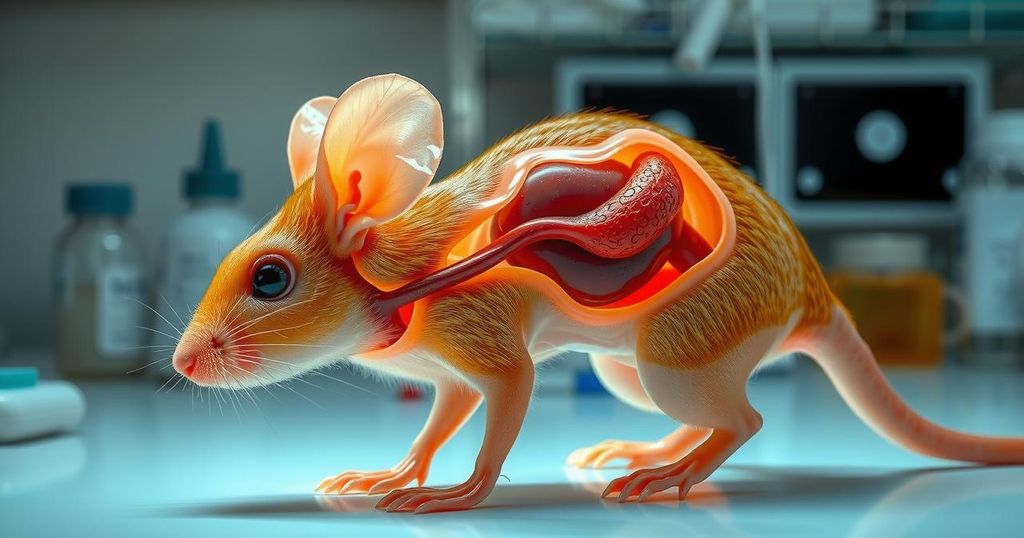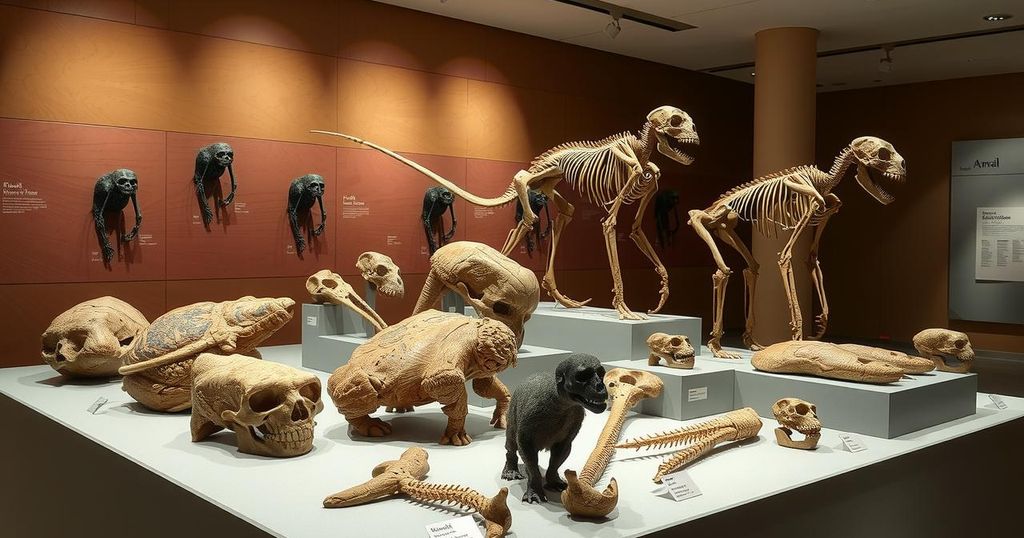Breakthrough Discovery Makes Mouse Skin Transparent, Resembles ‘Invisible Man’
Scientists have discovered that the common food dye tartrazine can temporarily make mouse skin transparent, revealing organs and blood vessels. This breakthrough offers exciting possibilities for biomedical research, including easier blood draws and potential early cancer detection. While still needing testing on humans, the research, echoing H.G. Wells’ ‘The Invisible Man,’ may reshape future medical practices.
In a stunning echo of H.G. Wells’ sci-fi classic “The Invisible Man,” scientists have unveiled a groundbreaking technique that makes mouse skin temporarily transparent using a common food dye. This information, published in the journal Science, could potentially change the face of biomedical research. Imagine peering into a living body just by applying a simple solution—that’s the dream researchers might be on the edge of realizing.
To achieve this transparency, researchers employed a yellow food coloring named tartrazine, which they mixed with water and applied to the skin of live mice. For a bit of context, they only treated the skull and belly areas after shaving off the fur to allow for better penetration of the solution. Once the mixture saturated the skin, it allowed scientists to visualize blood vessels and organs in real-time. And worry not, they reversed the effect safely by washing the solution off, a trick that apparently didn’t hurt the critters at all.
Zihao Ou, an assistant professor at the University of Texas at Dallas, described the transformation as somewhat magical—though rooted in optical physics. The dye molecules reduce the skin’s light-scattering capabilities, making it more transparent. “For those who understand the fundamental physics behind this, it makes sense; but if you aren’t familiar with it, it looks like a magic trick,” he said.
The mechanics behind this involve adjusting how light passes through different materials. When combined with the tartrazine dye, light couldn’t bounce off the skin anymore. Instead, it streamed through beautifully, as if a cloud had lifted, revealing the inner workings of the mouse. Ou compared the process to applying a facial cream that would only take minutes to show results. The dye isn’t just whimsical; it’s also safe and quite affordable.
However, the implications stretch far beyond curiosity’s sake. If this method proves effective in humans, it could simplify blood draws or fluid administrations, particularly in older patients. The potential for aiding early skin cancer detection and improving light penetration for treatments could also be huge. Guosong Hong, an assistant professor at Stanford, noted the significance of this technology for medical applications.
Experts are excited but cautious, given human skin is about ten times thicker than that of a mouse, creating hurdles for testing. Christopher Rowlands, a senior lecturer at Imperial College London, expressed regret for not discovering this sooner himself. The method is really based on an old physics principle, Kramers-Kronig relations, showing that what was once obscure can suddenly seem obvious when someone else shines a light on it.
Rowlands explained the method’s brilliance by saying, “It just works. You rub it on a mouse, and you can see what it had for breakfast. It’s that powerful.” This nuanced approach avoids some of the issues linked to other transparency methods, like tissue dehydration or swelling.
While the findings parallel Wells’ story, it’s worth noting that full invisibility remains out of reach. Ou acknowledged that their current work focuses only on soft tissues, leaving bones untouched for now. “However, a partially transparent mouse will already enable numerous research opportunities to answer questions relating to development, regeneration, as well as aging,” he reassured.
This advancement gestures at a future brimming with possibilities, merging fantasy with science in remarkably unexpected ways. The pathway from a fictional serum to a real-world application is both fascinating and promising. What’s next then? Who knows, but for researchers, there’s no denying that the veil between science and imagination is delicately thinning with each discovery.
In conclusion, this innovative application of a common food dye to make mouse skin transparent not only reflects art imitating life but raises intriguing prospects for medical science. While the full implications for human applications remain to be tested, the method’s early promise could revolutionize viewing inner organs non-invasively, improve medical procedures, and shed light on many biological mysteries. As scientists further explore these avenues, it becomes clearer that we stand at the doorstep of exciting advances in both understanding and treating biological issues. Delving deeper into this intersection of creativity and research, the capabilities of seeing inside living beings might reshape our approach to health care and biology altogether.
Original Source: www.mercurynews.com




Post Comment